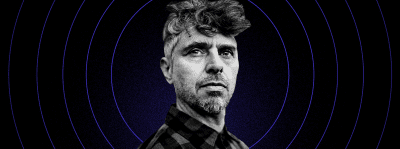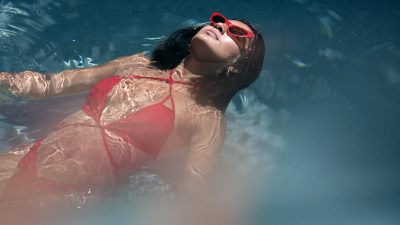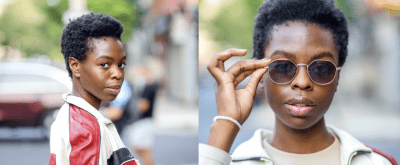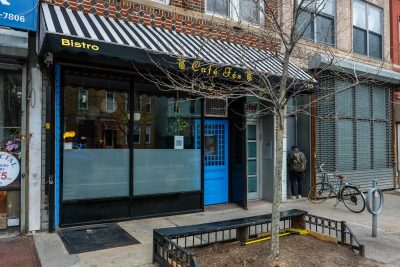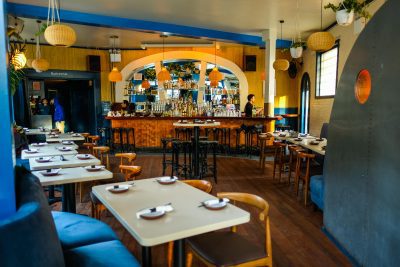Peter Shapiro’s long strange trip
On the podcast, the Brooklyn Bowl founder reflects on what he's learned from putting on 10,000 shows — and from the Grateful Dead
Like what you’re hearing? Subscribe to us at iTunes, check us out on Spotify and hear us on Google, Amazon, Stitcher and TuneIn. This is our RSS feed. Tell a friend!
Chances are, if you were to put on, promote or produce something like 10,000 live concerts over nearly 30 years, you’re going to learn a few things. Just ask Peter Shapiro.
The owner and operator of the Brooklyn Bowl venues, the Capitol Theatre in Port Chester, and before that, the Wetlands Preserve, Shapiro is all of that — venue operator, entrepreneur, promoter — and also a Deadhead, a fact that is relevant because were it not for the Grateful Dead, he probably would never have gotten his start in the venue business at all. He certainly would never have produced “Fare Thee Well,” the 50th anniversary Grateful Dead reunion shows in California and Chicago in 2015.
Shapiro writes about Fare Thee Well in his book, out earlier this year, “The Music Never Stops: What Putting on 10,000 Shows Has Taught Me About Life, Liberty and the Pursuit of Magic.” The memoir is a chronicle of 50 pivotal shows that helped define Shapiro’s life, his ethos — and his businesses.
This week on “Brooklyn Magazine: The Podcast” we have a long, strange trip of a conversation with Shapiro about his life before getting into the venue business, taking over Wetlands and Capitol Theater and then launching Brooklyn Bowl. He just celebrated Brooklyn Bowl Philadelphia’s one-year anniversary earlier this month and announced they will be opening one in Washington DC.
Shapiro, who is also the publisher of Relix magazine, breaks down what makes Brooklyn Bowl work and why it translates to other cities. We also talk about the Dead.
The following transcript of this podcast interview has been edited for clarity and flow. For the full conversation, click play to listen above or subscribe wherever you get your podcasts.
It turns out you’re a lot younger than I had initially thought you were, as someone who bought Wetlands in ’96, started Brooklyn Bowl in 2009, publishes Relix. Before fairly recently, I thought you’d be some guy in his 60s or something like that, but you’re barely a couple years older than me.
Well, I just turned 50, so I feel a little aged. But we figured out I’ve put on a show pretty much every night since I’m 23, so it’s 27 years.
What was last night’s show?
You know who I hung out with last night? Did you see the new Bowie documentary? I met with Brett Morgen who made that. I went to Portland, Maine, the night before and saw Trey Anastasio from Phish with this young band, Goose. It’s a great band. Tonight I can’t make the show, so I’ll go to soundcheck at the Capitol Theatre to see this emerging Southern rock Allmans Band called Trouble No More, continuing the Allman Brothers thing. And then Saturday night I’ll go see The Revivalists up at Capitol. Yesterday I went to soundcheck for Infected Mushroom.
That’s a great name. I’ve heard of everyone so far except Infected Mushroom.
They were cool. They’re still going. What I’ve learned, actually, sometimes when you can’t make the show it’s good to go to soundcheck.
I have an amazing soundcheck experience, actually. I grew up in California, and I went to Laguna Seca Daze [in 1993]. We did the whole camp-out thing, and we snuck down for soundcheck when Phish was soundchecking, I guess the day before, and they just really just put on a show for the couple of dorks who showed up to check them out. It was really fun.
Yeah, soundcheck’s fun. There’s no one around, say hi to the guys after the show. It’s something I’ve learned. Took me a while to figure that out.
I guess your whole journey starts in 1993. You’re, what, a sophomore in college? You’re going to Dead shows for the first time, and that’s where it all begins. What was that experience? What was that first, or those early, Dead shows like for you?
I really had one of those “Sliding Doors” moments where you either get on, you make the train before the doors close, you get on a train and your life’s one path. And then the idea is if you don’t make the train, if the doors close right before you get on, you live a different life.
So you’re Gwyneth Paltrow in this scenario, then?
I was going to, in March of ’93, Rosemont Horizon in Chicago. I went to the Dead show, and I know that if I hadn’t gone to that show, probably not here talking to you, Brian. I went to the show, and there’s this moment where they invited Ken Nordine, who’s a spoken word artist. I wasn’t ready for it. I was like 20 years old. I don’t know what happened, but all of a sudden I was in the parking lot with all these drum circles and these other 20-year-olds or early-20s kids I don’t know how I found my friends later. No cellphone. I’m here, there are all these drum circles. These kids were not going back to Northwestern like me. They were getting on a school bus, seeking fun, but also seeking something they weren’t getting at home or university, like some sense of community, group, life.
And the next morning I found myself at the library at Northwestern. I was a film student, major, and I was researching what had been done to document this scene. And I went on the road. Six weeks later, I found a kid with a big video camera. We rented a fan, like a Ford Econoline 150, no windows, all white. We learned quickly that’s not the best way to go on a Dead tour making a documentary, because everyone thought we were the DEA.
I have you beat, actually. I’m younger than you, but my first Dead show was at the L.A. Forum in ’89.
Wow. You must’ve been young.
I think I was 15. I can’t believe my parents just dropped me off and found me afterwards. I don’t know how we got there and back.
How did we go find our parents then?
I know. I don’t know. When you talk about the kids who were getting back on the bus, do you mean they were following the Dead? You’re down there. Were they calling it Shakedown Street then in the parking lot?
Yeah, I was hanging out at Shakedown. It was snowing. March ’93. I had never seen anything like that. By the way, it still doesn’t exist. You can go to a Dead & Co. show or a hippie show, or Metallica’s got its kind of fans, or Pearl Jam has very dedicated fans. But that traveling circus that was the Grateful Dead touring in the ’90s and the ’80s, and before, it went away when Garcia passed away.
Well, it’s interesting. The ’90s, like ’93, that’s the tail end of the comet. You’re not seeing peak Dead, you’re not seeing peak Jerry. But the scene had really exploded when “Touch of Grey” came out and when they had their first hit, and all the kids started going to shows.
The MTV “Touch of Grey” video was a big part of that. The band’s music may not have been at peak, but the scene in terms of just seeing a mass of humanity and colors, and the closest thing you could get to, to what we read about the ’60s. By the way, it was like 30 years after the ’60s. We’re now 30 years after what we’re talking about.
Which is crazy. We’re getting old. But for me [the parking lot scene] was scary, too. It was cool. It was communal too. But there were menacing corners of it.
Yeah, there was sketch about it. I made this film called “And Miles to Go,” and it’s up on YouTube. I went, and some of it I captured some of the sketch, but I went and made a film after that experience at Rosemont Horizon. I made this hour-long documentary. I could not get the band to be in it. It’s all about the scene outside the show. We’re not in the show. But I got, like, Ken Kesey and Timothy Leary and Wavy Gravy and all the people around the scene.
Ironically, I made this documentary as a kid. I couldn’t get the band even to do an interview. And then 25 years later, I made their 50th reunion shows, and I chose to do it in Soldier Field in Chicago. I wanted to do stadiums, because to me that Grateful Dead experience, a big part of it was the scene outside the show.
You’re there shooting the parking lot scene in ’93. You couldn’t get the guys in the band to be in it. But as you say, 20, 25 years later, you’re doing the Fare Thee Well shows. It’s an incredible arc. It’s an incredible story. Also, you’re teaming up with Justin Kreutzmann, the son of the drummer, Bill, in the Dead, who was also shooting in ’93.
That’s one of the coolest things. This will reflect the Grateful Dead, for anyone listening. We go to make the Dead 50th, and I’ve got these old videos from the parking lot in the summer of ’93, when I was not allowed to go inside. And I’m shooting parking lot scenes. I tell Justin, “Yo, I was on summer tour ’93, and I have all these videos from outside the stadium.” You know, I wasn’t allowed inside. And he’s like, “Yo, I was a film kid in ’93, and I was backstage, and I was never outside. I was hanging out with Jerry Garcia backstage.” So we were like, wait a minute. I was like, “I was at Deer Creek and Buck …” and he’s like, “Dude, I was in Deer Creek at the same show. I was just shooting on the same big video camera.”
Justin was shooting as a 20-year-old backstage with the band. I was shooting outside, the fans, the scene, the craziness. And we put them together, his yin, my yang, his chocolate, my vanilla. So at Dead 50th on the screens at the set break, we had these videos capturing scenes from a show, and I had the parking lot and he had what was going on backstage.
That’s the Grateful Dead jujitsu spirit, which is like, we were filming the perfect content, perfect stuff to run for the Dead’s 50th 25 years later. We just didn’t know it. Worked out great.
This footage and this documentary that you shot in ’93, that was integral to, or at least helped pave the way for you to take over Wetlands in ’96 three years later. Is that accurate?
Jerry Garcia died in August of ’95. I had made this film that we were just talking about, this documentary. I went around to colleges in ’96. I was still a young kid, 23. I went with a Dead cover band. The bass player, Marty Bostoff, at one stop, was like, “Dude, you need to meet Larry Bloch. He owns Wetlands. He’s looking to someone to continue it. You just went on Dead tour. You know how important the scene is.” So I reached out to Larry. He’s like, “You should buy Wetlands.”
I didn’t really have a lot of money, but I was like, I knew how big this scene was. And I also knew that when Garcia died these people who were like 20 years old, 25, 30, loving this improvisational music, this scene outside in the parking lots like we’re talking about, or going to soundchecks at Laguna Seca, that kind of demographic, is not going to just go away just because Jerry died. It would splinter off to some people going into maybe the more Southern rock Dead side, which would be like Warren Haynes, the Crowes, Widespread Panic. Some might go more bluegrass. That would be like String Cheese Incident. Some more Dead jazz. That would be more Medeski Martin & Wood. Some more prog rock, Umphrey’s McGee. Electronic, Disco Biscuits. So there would be a whole new scene of young bands that now I thought would elevate up. So that made me interested in Wetlands, which was home of that scene in Lower Manhattan.
And it was ironic, because Larry Bloch, who started it in ’89 and was — you know, when you run these clubs and they’re seven nights a week — he lasted seven years before he put his hand up and was like, “I can’t do it.” Because when you’re doing seven nights a week, every morning you get up, you got to deal with what happened last night, and you don’t get to pause to take a breath. You have another show that night.
I raised my hand and was like, “Yo. Here’s my film.” I showed him the film, and that opened the door for him to say, “You get it.” Because he built Wetlands, really. It became an amazing home for music, even though it wasn’t built to be a music venue.
You’re basically 23, right? You’re running this culturally significant club in New York. What did your parents think about all of this? You’re just out of college. It’s probably not why they sent you to Northwestern. Or are they like, “Go for it, it’s your business degree”?
Yeah, my parents. My dad was a tax lawyer. He really helped make it possible. I think he wanted to support that entrepreneurial spirit, because I had no entertainment background in my family. And being a tax lawyer, he played it a little more conservative. What was great is when you go to try to buy a rock club, even if they’re quote-unquote “giving” it to you — and Larry Bloch made it possible. I paid him on a note over time — my dad made it possible, because when you’re 23, you really don’t know anything. You don’t know what you don’t know. But I had my dad there as a win man. I didn’t even know what my lawyer was telling me, the one we hired to do the deal to buy Wetlands. You just don’t even understand the concepts.
That’s great that you had that support. And then comes 2009, which is a couple years later. It’s not that much longer down the road. It’s a big year for you. You both become the publisher of Relix Magazine, and you open Brooklyn Bowl, which are two different ventures, publishing being, as I know, really hard to do. Why Relix, other than you’re a fan?
Now in 2022, it’s even a lot more harder to establish and create a brand that people respect and people love today, because there’s so much flying around. Wetlands, in ’96, when I took it over, there was no podcasts. There were no streaming. In fact, there was no email. You got shows from the Village Voice ad. And here’s the cool thing. In ’96, the Village Voice would come out on Tuesday night, Wednesday morning. You’d get it. You’d open it up two thirds to the back, and there’d be those 10, 15 pages that were the music ads. Tramps, CBGBs, Roseland, Madison Square Garden, Wetlands. And you’d scan through them, right? You’d got page by page and look at all these ads. And at the end of the 20 minutes that you spent going through the ads, you had a really good feel for what was coming to New York, shows. You knew what was coming.
Today, 2022, technology’s way ahead. We’re all on email lists, social media. But I don’t know, sitting here tonight, today, on this Friday, November 11th, what’s really playing across New York like I did in ’96. I know the venues that I’m on email lists for. I know the venues that I follow on social. There is no more Village Voice print to scan through.
But then you go into publishing yourself with Relix, which is niche, right? It’s a Dead fan magazine. It’s still going, right? What is Relix today?
Well that’s the pitch. That audience is the best live music — most consistent ticket-buying — audience that there is. So they’re dedicated. Vampire Weekend, example of an indie band that’s started now to get appeal from that jam world a bit, and they were on the cover of Relix. This started as a Grateful Dead thing. That wouldn’t’ve happened, I don’t think, 10, 15 years ago, but we’ve tried to broaden it. And that’s kind of similar when we get into the Brooklyn Bowl talk. It’s like, keeping that Wetlands spirit, keeping those Wetlands bands, jam world, and then dropping in some indie, and obviously we do a lot of world music, and reggae touches that. So that’s kind of like the indie, jam, my world.
Right. Which really exploded after Jerry Garcia’s death, right? There was this dispersion of, like you were saying, the fans. This whole culture didn’t have a central focus anymore, and it really birthed a lot of these jam and jam-adjacent cultures.
That’s a good word. I’ll use that, actually, in the future. “Jam-adjacent.” If we go to any city in America, top 200 cities, like Jacksonville, Florida tonight, Portland, Oregon, Portland, Maine, Denver, pick it. We open the Village Voice of that city, and it’s a lot thinner now, you would find jam and jam-adjacent shows in that market for every night. The reason is because the audience is so strong for live, right? They don’t sell a lot of records, but they’re really strong live. It’s a long show. It’s got a set break, usually. People are communal and hang out, and they hang out at the bar. They’ll buy drinks.
If you do a big indie rock show, emo rock, it’ll be crowded, but it’ll be 90 minutes and done, 80 minutes and done. It’s shorter and there’s no set break, and everyone watches the show the whole time. I’m not kidding. I met a kid the other day. He was an intern for me who said, “Hey, I exist because of Wetlands. My parents met at Wetlands.” And that’s because, also, Wetlands wasn’t built to be a music venue. It was originally a Deadhead hangout. So not everyone could see the show. Thirty percent would go to the bar or downstairs in that basement, and they would hang. You could hear it. We had great sound. But because of that, you would go hang out, and that’s when you met people.
And Brooklyn Bowl is sort of laid out the same way. I’ve seen a lot of shows there, and a lot of great shows. It feels like there’s a sensibility to it, almost like that you were personally booking acts that you were into and curating your own playlist. But in theory, it shouldn’t work. You’ve got this bowling alley next to a stage. What was the logic there?
Well, you’re right. And it’s worked pretty good. And we did try to build Brooklyn Bowl to have different areas, a bit of a village, because a music venue in its best way has that village. I learned that at Wetlands, but we try to optimize the music venue part. The Bowl was about taking what worked at Wetlands.
When we came up with Brooklyn Bowl, it was to take what worked at Wetlands vibe-wise. On the back of our security jackets, they say “Welcome.” They don’t say “Security,” you know? But yet let’s now have great sight lines. Let’s have an area that you can walk around. Let’s have some food. Let’s have great air conditioning.
And we built a better widget a little bit in terms of bands. Because there was additional revenue from the bowling and the food, we could give bands 100 percent of merch. Because we had those other revenue streams, we could charge less at the door and pay the band the same amount as they were making, let’s say, at Irving Plaza from $10 more ticket price. To pay a band 10 grand out of Irving, maybe tickets probably would be 30 bucks, because they don’t have those additional revenue streams. We could pay a band 10 grand and just charge 15 or 20 bucks, because we had the bowling and the food, and we could give the band 100 percent of merch. Irving gave probably 80 percent.
So if you’re a band and you’re playing on a Friday night, if tickets are 30 bucks at Irving or at Bowery, you’re not going to do any walkup. Or you’re not going to get a random walkup just coming up to Irving and saying, “Who’s playing? I don’t know. Oh, this band? I’ve never heard of them. It’s 30 bucks? Sure.” That doesn’t happen at 30 bucks. It’s like a threshold. But at 15, 20, you’ll get walkup.
So you’re the band, and say you sold 400 in advance. You got another 400 walkup. That’s 800 people. Half of them have never seen you before, right? Those new walkups. That’s what you want as a band. You want to play for new people, turn new people on. When it’s 30 bucks at Irving, it’s harder to get those new people. Most of that audience has seen you before.
You’ve mentioned Brooklyn Bowl Vegas. You mentioned Philly. In Philly, Brooklyn Bowl has been open for a year now. How do you maintain quality control across the board? What makes Brooklyn Bowl Vegas a Brooklyn Bowl? Obviously Brooklyn’s a fantastic brand in its own right. But is there a paradox in saying, “This is Brooklyn Bowl Philadelphia, Brooklyn Bowl Vegas”? How do you maintain consistency across cities?
We have common design elements. The wood. Literally the wood, you know? The floor, the half walls, and what’s behind the stage in terms of the red curtains and the screens. And the menu, it’s Blue Ribbon. And our staff. We hire and encourage them how to treat the audience, treat the talent. It’s not about today’s Brooklyn. And you know this, Brian, from the magazine. But for us, it’s old Brooklyn. It’s Coney Island Brooklyn. It’s that fun house Brooklyn. We went to Philly. Philadelphia’s not an easy town to go in and do a venue called “Brooklyn.”
Right. They have a lot of city pride in Philly.
So what we’re doing now is taking things like the Philadelphia Phillies colors and logo and doing a Brooklyn Bowl logo integrating that stuff. All the details matter, which is why it’s still hard. The sound levels in every part of the venue, and the lighting in every part of the venue, and making sure that the fans get treated right when they’re coming in through security. Every element of it counts. So if you try to hit all those marks. And it’s hard, because when you’re doing a thousand people through the room on a night, you can’t control all of it. You do your best, and you try to find people who care like you do.
If you’re young and you like music, I can’t imagine a better gig. You also put out a book. Just a couple months ago. “The Music Never Stops: What Putting On 10,000 Shows Has Taught Me About Life, Liberty, and the Pursuit of Magic.” What has putting 10,000 shows on taught you about life, or liberty, or the pursuit of magic?
We’re seeking that moment in a crazy world. This improvisational kind of music — and you know, it’s not always great, but that’s what makes it work — when it is great it’s not the same set every night. It doesn’t have that consistency. I think that’s what can lead to magic, right? They’re seeking, they’re playing improvisationally, trying to find a connection with the other musicians. So when you find it, it pops, and the audience feels that.
And we figured out through the book, I’ve put on 10,000 shows. I haven’t been at every one, but if something went wrong, I’m the guy who gets the phone call at 4:00 in the morning or 7:00 in the morning, “We have a problem.”
What’s a memorable problem? There’s got to be some crazy stories from the past decade-plus.
Yeah. I can’t get into the most-crazy ones. A lot of it is responding to things that are going wrong, and your ability to pivot and adjust. It’s like the second shot, in golf, a lot of people say is the key shot. It’s the recovery. So for me, putting on live music shows, there’s a lot of variables, and so a lot of it’s adjusting.
Which brings me to one of the last questions I have, which is, you were very good at pivoting and adjusting during the pandemic. You were pioneering these virtual shows. You had The Hold Steady doing their residency, things like that. Talk about how prepared you felt when it happened. Or did you figure it out as you went along? Are you taking that forward and implementing it past peak pandemic?
Well, unfortunately I didn’t get to build an outdoor restaurant and get that. That’s a big result from the pandemic in New York City. Streaming got big. People were watching shows. It’s interesting. It’s fallen back down, the streaming numbers and how many people are watching, back to pretty much where it was pre-pandemic. And it helped me get through. People need that live music fix, and when they couldn’t go to shows, we started putting on shows with no audience and filming them and streaming them out, and we had huge numbers during Covid. The Jason Isbells and the Hold Steadys and the Bobby Weirs, huge.
But it’s kind of back to where it was live. Now they’re really back. They’re totally back. Masks are off. We’re not getting another shutdown every three months. That was a hard part of Covid.
How are you preparing for any possible Thanksgiving spike? We saw a huge spike in January after the holidays. Are you guys thinking about that? Are you ready in case that happens?
We are not. We’re really hoping, Jesus, that we don’t have that again. We would respond quickly. That was really tough. We lost our New Year’s shows a year ago. I really hope we don’t face that again. That was a tough experience. Every day was like, what do we do now? How do we adjust?
And by the way, the government saved our ass. It saved a lot of people. I don’t think it gets enough credit. There’s a lot of people now yelling, but everyone wanted that government help. Everyone, blue and red and purple. Everyone wanted in on that. So let’s all keep that in mind. And we made it. And all the venues. You know, the Independent Music Coalition stuff that happened. There were some positive things like that, seeing people who are usually competitors come together for survival.
Nightlife United. Great organization that came out of the pandemic.
And NIVA. Listen, I’ve been on my own doing this, and then sometimes I partner with the bigger companies, Live Nation or AG or MSG. I’ve worked with all of them, because sometimes when you’re at the playground you want to go down the slide, and you’re like, “I’m doing this alone,” but then there are times when you’re like, “You know what? This time I want to go down the slide on the back of the biggest kid in the playground.”
Where do you go out in Brooklyn? When you’re not going to one of your venues, where do you like to eat?
I like Leuca, which is underneath the William Vale next to the Bowl. It’s funny, we opened the Bowl, and none of those hotels were there.
It was a desert. I remember.
I used to share a box with Questlove, and actually with the Tonight Show with Fallon at Barclays. Those first years at the Barclays Center. I found it amazing they built that giant arena. It’s not that big of a plot of land, right in the middle of Brooklyn. I was driving by Brooklyn Bridge Park yesterday or the other day, looking down. That’s an amazing place, fun to walk around. Obviously, going to shows. Brooklyn Steel is a really nice venue that’s been built. Kings Theatre is really cool. The Paramount in downtown Brooklyn’s being renovated now. There’s going to be a new Kings-esque, Palace-type theater. I don’t know what that’ll mean for my Capitol Theatre in Port Chester, but all good. And Music Hall is a really nice spot. I love those shows that are not mine. Live music never fades. I love going to my own shows, but I’m always looking around when it’s my own, and like, “Is everything correct?”
Check out this episode of “Brooklyn Magazine: The Podcast” for more. Subscribe and listen wherever you get your podcasts.
You might also like 

















